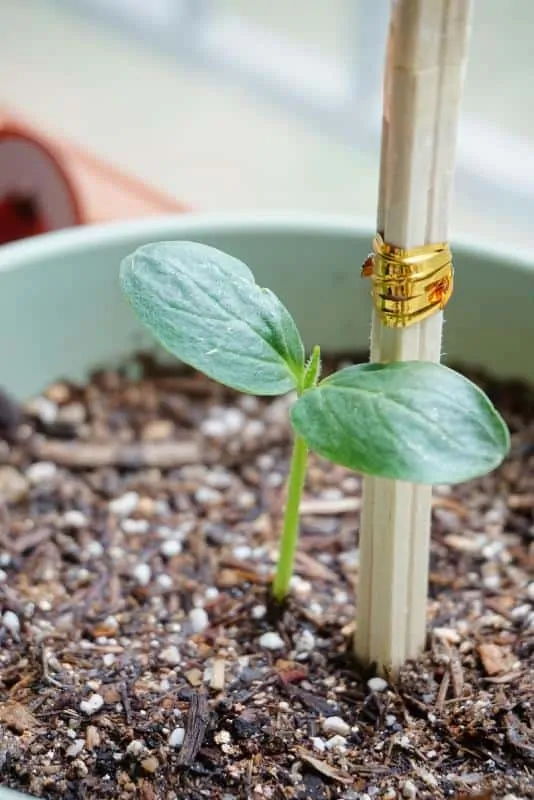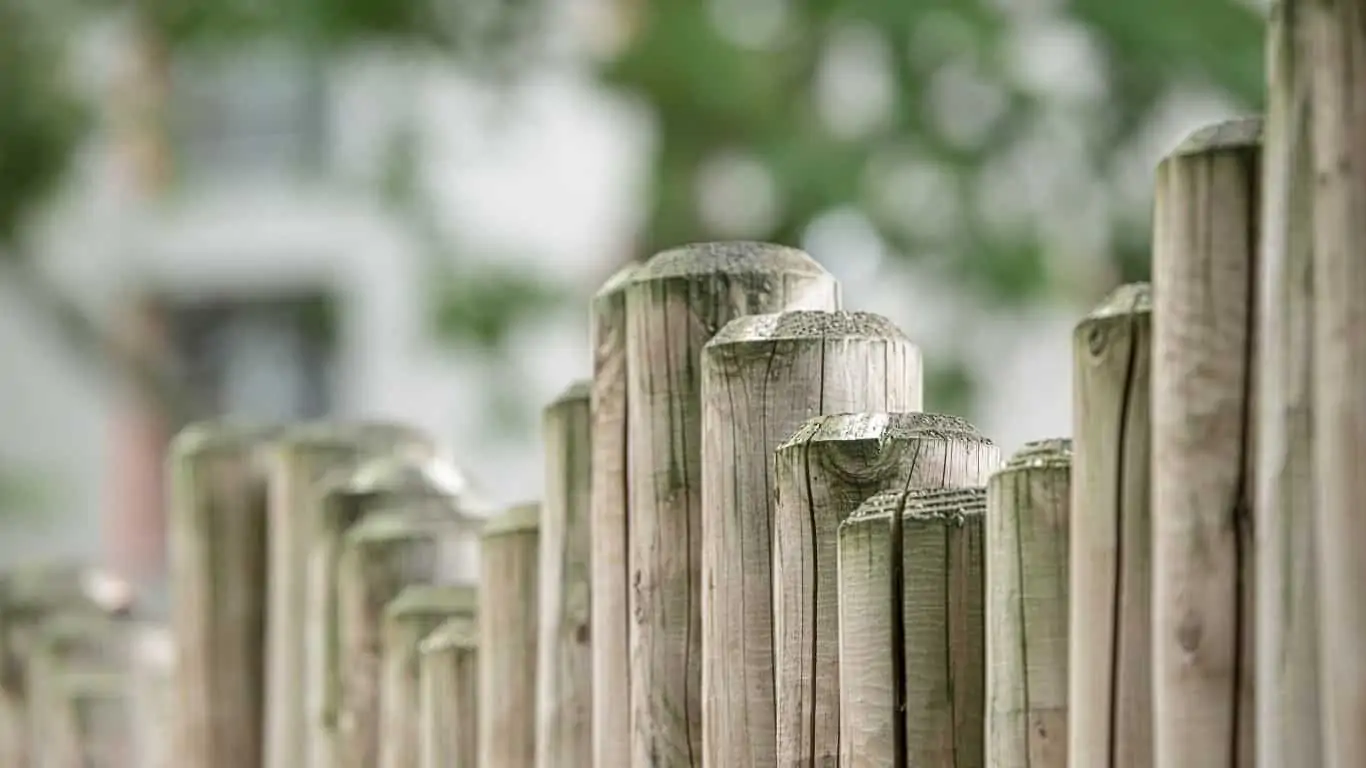Do you like a clean, tidy, and Healthy vegetable Garden? Yes, Then definitely you are a fan of plant supports like netting and trellis. These are just a few Easy Ways to Support Vegetable Plants in your garden. There are plenty more to look out for and amend whenever required. Today’s topic of discussion is a must-watch for every home, backyard, or kitchen gardener. I know you guys work tirelessly and continuously to get those beautiful and tasty veggies during the season. Some of us like to grow summer vegetables, while others love those fall and winter veggies like pumpkin and all. There are few of us who conquer this race by successfully growing vegetables in both of these seasons. I really appreciate them, they have achieved a real tough task.
Do you know their secret? They are organized with their garden work. It helps them to save time and money without waiting for their vegetable yield. Providing appropriate support to vegetables in the garden is something they all do. It’s just a part of their successful gardening plan. Follow along if you want to achieve something similar to that.
Check out my previous post: Best Flowers for Christmas Decoration
Why Do We Need Plant Support in the Garden?
There are three main reasons to support vegetables in your garden. They can grow perfectly without any support. Still, we provide support especially to annual vegetables for the following reasons.
- Maintain Tidness
- Allow easy movement between each plant
- Prevent waterlogging and allow proper evaporation
- Avoid pest attack and fungal growth
- Provide easy to harvest vegetables
- Increase room to spread new branches
You can maintain better cleanliness and keep your garden tidy and well organized with plant supports. It will allow better movement with empty space around the plant.
Vegetables with proper support can have organized vertical growth instead of sprawling on the ground. It will allow good aeration near the roots and help to regulate the water cycle. This can also protect the plant from pest and fungal attacks.
It also allows better access to the fruits. This in turn results in a better harvest.
Is it necessary to support Vegetables in the Garden?
No, not at all. It is not necessary to support your vegetables in the garden. They can grow perfectly on their own. Although they will sprawl and spread to their extent. This may cause a shortage of space for other plants. Usually, vines or creepers can expand as long as they can. So if you grow a cucumber or bean in your garden and let it sprawl on its own. Then your garden might end with just two of those covering the entire space.
Another problem with this approach is that this can lead to a downfall in production especially due to excessive pest attacks. It would be easy for the bugs and pests to feed on the fruits and foliage near the soil surface. And, it would not be good for the overall vegetable yield of your garden. Otherwise, this can be avoided with proper vertical or angle garden support.
Also Read: Ranunculus Asiaticus: Common Pests and Diseases
What are the Benefits of Supporting your Vegetables?
It is really beneficial to Support your vegetable plants. The first visible benefit that everyone can easily notice is the abundance of space available afterward.
Once you apply a stake or fence to give your plant some support. You will notice that the plant itself tends to grow upward with support. This will lead to sufficient room in between those plants. It will help you to move and work easily throughout.
Next, Supporting a plant will keep its fruits away from the soil surface. This in return prevents bugs, pests, and worms to damage your crop. Such arrangements also help the branches to stay away from water and mud especially during irrigation. Keep in mind that most vegetable plants die either due to pest attack or fungal infection. Water splash on the foliage is a prime cause of these problems. You can easily avoid these with proper staking or fencing the plants.
If you grow a tomato plant and provide proper support then it can bear more fruits with increased pollination. Otherwise, most of these flowers may die without successful pollination. It happens mostly due to the less available room for pollinators who can’t reach every flower lying low to the ground.
Ease in harvesting fruits and veggies is another important benefit of supporting your plants. Creeper and vines like beans or cucumber can have additional benefits with proper support. These plants can have longer fruits due to extra height and free growing space. Gravity also plays an interesting role in this growth pattern.
Vegetables that Require Additional Support
Almost every vegetable can benefit from plant support. At least you can have a tidy and well-organized vegetable garden. After all these years of gardening, I have learned that some vegetables prefer to support more than others. Check out this list and prepare proper support for your vegetables. I hope this will help you in getting a good yield this year.
- Cucumber
- Green Beans, Broad Beans, and all others
- Tomatoes
- Gourds
- Dwarf Pumpkins
- Cucamelons
and all other cucurbits need some kind of stake or support. If you like growing any of these vegetable plants then you better-set support for the plant. These plants prefer supporting their extended growth. They will perform better with a higher yield.
10 Easy Ways to Support Vegetables in the Garden
We can install support to our vegetable plants in different ways with different materials. Use these materials or support according to your plant’s needs. Different vegetable plants vary in shape size and even in their fruit size. Hence, their need for support also varies. For example, plants like tomatoes require a sturdy stake or support to stand still. Whereas vine-like green beans prefer plastic green nets or strings to grow right.
Let’s check out different materials and support for your vegetable plants.
Read this: Plants and Vegetables to Grow in January
Metal Cage Support
A metal wire cage is one of the basic materials to support your vegetables. It is useful for tomatoes and other spreading vegetable plants.
We can also use a metal cage to support heavy dwarf pumpkins. It will require some solid sturdy support to hold those big fruits. Usually, store-bought wire cages are only good enough for light vegetable plants. Those metal nets are not so strong for heavy fruits and branches. In fact, they are more costly than strong fence wire or chicken nets.
Therefore, it is better to use inexpensive chicken wire and make a cylinder from it. You can further install this cylinder around a vegetable plant. These fencing metal cages will do the best job of supporting the plant to grow and bloom till the end of the season.
Green Net or Plastic Netting
Green plastic nets are another great supporting material for your vegetable plants. It’s light but costly. These plastic nets are good for lightweight plants and vegetables. Generally, green nets are used for sideway fencing and sunshade. They’re not meant to hold heavy fruits and climbers or vines. Though you can use green plastic nets to support beans and cucumbers and other light sprawling vegetables.
Wooden Pole
Wooden Poles or Teepees are better to plant support for heavy vegetables. They are inexpensive and they won’t cost much most of the time. In fact, you can use freely available dead fallen branches to support plants.
A bamboo stick is a better option that will not cost much. You can get some bamboo sticks at a low cost and build a teepee or wooden pole for your vegetable plants.
Angle or Lean-To Support
You can prepare an angled or lean-to support for your plant with ropes or sticks. This type of support is ideal for soft stem veggies like tomatoes, bell pepper, or beans. It allows better fruit growth and harvesting.
You can prepare lean-to support by aligning a treat, string, rope, or long stick inclined to a wall or fence. It is easy to make and really sturdy and durable to use. This type of support can also hold heavy vegetables like pumpkin and gourds.
Live Tree support
A big tree can also act as standing sturdy support for climbers or vines. In fact, you can see a lot of vines growing upward with trees. If you have a tree may be an apple, pear, mango, guava, or any big one then it can act as a support for your vegetables especially vines.

Read this: Is Squash a Gourd? Kitchen Garden facts
Individual Stake Support
You can also use sticks or wires with individual plants to support them. These stakes or support are durable and effective for individual plants. It is helpful especially for tomatoes, bell pepper, chilies, and dwarf hybrid beans.
Individual stake support is good to organize a vegetable garden. It will keep the plants well organized and properly spaced. An organized garden has more room for you to move around the plant. you will have better handling space for seeing and fertilization of individual plants.
Companion Plants
Companion planting is another great way to support your vegetable plants. The whole idea of a companion plantation is to grow different vegetables together without disturbing one another.
It requires growing compatible plants that don’t compete with each other for nutrition and space. Usually, vegetables with different nutritional needs and growth patterns are grown together.
A good example of companion plants is the three sisters. It includes Corn, squash, and beans. You can grow these three plants together without disturbing their natural growth.
The corn plant provides staking support to the beans. In return, it nourishes the soil with nitrates. Gourds provide protection from bugs and animals.
Similarly, you can grow multiple vegetables and let them support each other.
Archway Support
Metal archway is a good option for organized raised beds. Vegetable beds with archways from one end to another perform better than usual.
You can provide support to small vegetable plants as well as different types of vines with these supporting archways.
A metal archway can be easily prepared with multiple metal wires arranged in crossed fashion. Arrange wire arched from one end to another over the raised vegetable garden beds.
Grow veggies along each end of this wire arc and support the plant. Tie the plant to contain the branches along the archway. Repeat this with ever-increasing plants growth.
Trellis Support
Trellis made of lattice material is the classic support for every vegetable plant type. We can use trellis with almost every short-height vegetable plant. You can set up the trellis of different strengths depending on the plant’s need.
It can be installed to support either a single plant or an entire row of vegetable plants. You can either buy a premade Trellis on Amazon or make a custom one with any lattice material.

Also Read: How to Care for a Live Christmas Tree at Home?
Wall, Building, and Garden Fences
The final option in this list is the infrastructural setup in your garden area. It includes the walls and fences around your garden.
You can also grow vegetables especially vines along a sidewall or fence. These are strong and sturdy support for your plants. And yes, you need not spend a single penny to get this type of support for your plants.
When is the right time to support vegetable plants?
Vegetable plants need support from the beginning till the end of their growing season. The type and size of plant support also carry with the vegetable type and its plant size. Therefore it is better to install long support to the baby plants. This should be done at the plantation time. You can later tie or tangle the plant to the support. Repeat this once the plant gains a certain height.
Though we can add support to the growing vegetable plant at the latter stages. It is better to do this at the plantation time. Latter it may require extra effort to deal with the growing plant.
Some Drawbacks of vegetable Support in Garden
Plant support is beneficial to every vegetable plant. Though it has some drawbacks that you should consider. First of all, It will take time and effort to install these stakes or fencing.
Next, if you take any professional help or use some tools then you have to spend a lot of money. Overall cost and effort are the only drawbacks of support in the vegetable garden.
Other than these vegetable supports have no other drawbacks. It can only help the plant to grow big and yield better than ever.

